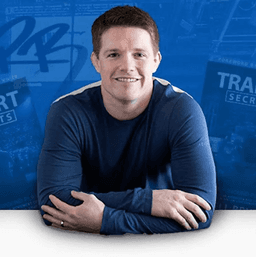From Beta to $170M: The ClickFunnels Success Story


Business Description
Table of Contents
Navigate through the case study sections
Executive Summary
Case Study Content
Introduction
ClickFunnels launched in October 2014 to solve a simple problem: marketers needed a single tool to build and run sales funnels. Before that, entrepreneurs stitched together page builders, email services, checkout systems, and analytics. The co-founders Russell Brunson and Todd Dickerson set out to bring everything under one roof without raising outside capital.
Founding & Vision
Russell Brunson’s hobby of studying direct mail as a kid morphed into a career in online marketing. He spotted the frustration entrepreneurs felt juggling multiple services. Partnering with developer Todd Dickerson, he built a drag-and-drop funnel editor, integrated email automation, payment processing, A/B testing, and analytics. They kept control by bootstrapping, which let them focus on customers rather than investors.
Early Challenges & Breakthrough
The initial launch fell flat, ad conversions were low and sign-ups trickled in. Russell shifted to live demos at events and tapped into his direct-marketing roots. A San Diego presentation closed 30% and launched an on-demand webinar that drove thousands of users. Within a year, ClickFunnels grew from 100 beta testers to over 10,000 paying customers.
Growth Strategies
- Value-first marketing through free webinars, ebooks, and training videos to educate entrepreneurs.
- Leveraging Russell Brunson’s personal brand to build trust and attract early adopters.
- Diverse funnel types, book offers, challenge funnels, and lead magnets, to showcase the platform.
- Cultivating the “Funnel Hackers” community with a high-energy annual event drawing 5,000 attendees.
- Continuous updates and feature releases based on user feedback.
Scaling & Revenue
By 2017, ClickFunnels hit $100M in annual revenue. They never took venture cash, opting instead for profit-driven growth. In 2024, annual revenue topped $170M, fueled by over 100,000 active users. The success also spawned books, coaching programs, and partnerships, like the e-commerce integration with Zendrop announced in 2024.
Overcoming Hurdles
As usage exploded, scaling issues triggered service outages. Once, a major disruption hit while Brunson was overseas. He logged on to explain the situation, outline fixes, and take responsibility. That transparent response strengthened trust and loyalty.
Looking Ahead
ClickFunnels continues to roll out new features, advanced CRM modules, AI-driven tools, and deeper e-commerce integrations. Their focus remains on making marketing funnels accessible to entrepreneurs of all levels.
Conclusion
The ClickFunnels story shows that solving a real pain point, prioritizing users, and building a passionate community can drive massive growth without outside funding. By sticking to a bootstrapped approach and constantly iterating based on feedback, the founders built a $170M business in under ten years.
Key Takeaways
- 1ClickFunnels solved a complex pain point by uniting multiple marketing tools into a single drag-and-drop platform.
- 2Bootstrapping allowed the founders to retain control and focus on customer needs rather than investor demands.
- 3Live presentations and on-demand webinars turned an underwhelming launch into rapid user acquisition.
- 4Building the “Funnel Hackers” community and hosting an annual event cemented user loyalty and word-of-mouth growth.
- 5Continuous feature updates based on real feedback kept the product ahead of competitors.
- 6Transparency during service outages and direct communication strengthened trust with users.
Key Facts
Tools & Technologies Used
Premium Content Locked
Subscribe to access the tools and technologies used in this case study.
Unlock NowHow to Replicate This Success
Premium Content Locked
Subscribe to access the step-by-step replication guide for this case study.
Unlock NowInterested in Being Featured?
Share your success story with our community of entrepreneurs.
Explore More Case Studies
Discover other inspiring business success stories

How 90 Reels Generated $5,400 From Free Social Media Traffic
In this case study, a marketer partnered with trading educator Thomas Kralow to repurpose long-form YouTube content into...
Wolf Of Retro Drops Affiliate Program

How Emily Reagan Built a $275K E-Learning Empire From Freelance Roots
Emily Reagan, a military spouse, overcame constant relocations and the demands of family life by turning her freelance m...
Emily Reagan Public Relations & Marketing LLC

How Kaleigh McMordie Turned a Food Blog Into a Six-Figure Asset While Raising a Family
Kaleigh McMordie, a trained dietician, built Lively Table into a thriving food blog that reached over 200,000 monthly pa...
Lively Table